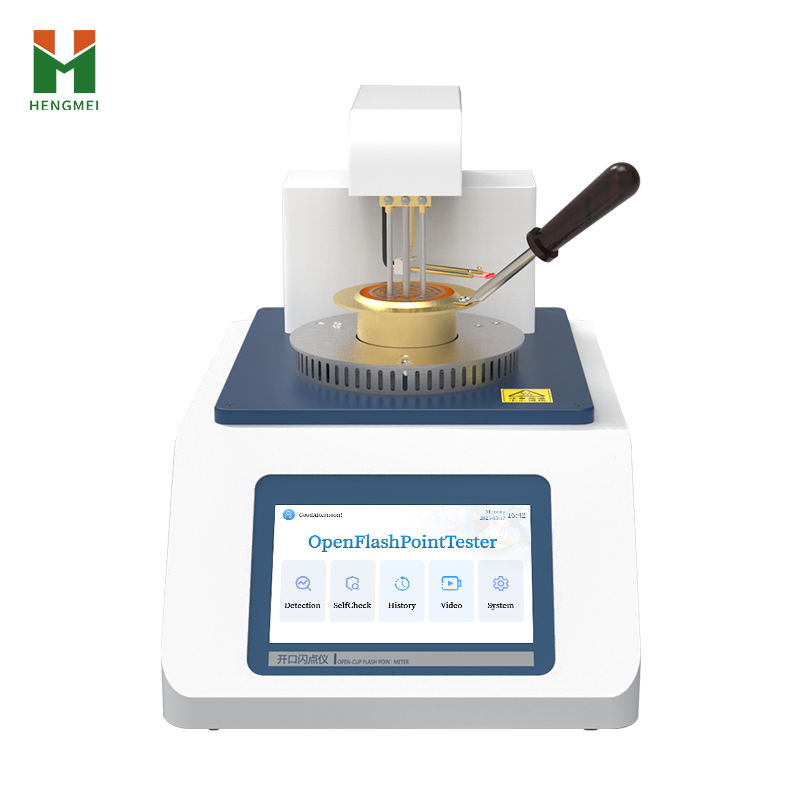In industries such as petrochemicals, railway transportation, and aerospace, the flash point and ignition point of liquid fuels are key indicators for evaluating their safety performance. As a professional equipment for measuring these parameters, the accuracy and reliability of the test results of the fully automatic open flash point and ignition point tester directly affect production safety and transportation safety.

The industry significance of flash point and ignition point testing
1. Basic concept analysis
Flash point: The lowest temperature at which a mixture of vapor and air on the surface of a liquid ignites when exposed to a source of fire
Ignition point: the lowest temperature at which a liquid continues to burn
Safety significance: directly related to the fire hazard assessment of materials
2. Industry standard requirements
GB3536-2008(ASTM D92); GB/T 267-88; ISO2592-2000
3. Limitations of traditional detection methods
Large manual operation errors; Low testing efficiency; Security is difficult to guarantee; Difficulty in data traceability
Working principle of fully automatic open flash point and ignition point tester
1. Core technical principles
The intelligent temperature control system heats up according to the standard heating curve
Identification of Flash Burning Phenomenon by Flame Ion Detection Technology
Automatically lock flash point and ignition temperature values
2. Instrument workflow
(1) Sample preparation: Measure the liquid to be tested according to regulations
(2) Parameter setting: Enter the expected flash point value
(3) Automatic testing: Heat according to the standard heating program
(4) Result judgment: Automatic recognition of flash point and ignition point
(5) Data output: display/print/upload results
3. Key system components
Temperature control system: Class A PT100 temperature sensor (accuracy 0.1 ℃)
Ignition system: electric ignition device
Detection System: Flame Ion Detection Technology
Cooling system: forced air cooling device
Data system: unlimited storage capacity
Technical advantages of fully automatic open flash point and ignition point tester
1. Performance testing
Measurement range: Room temperature~400 ℃
Temperature accuracy: 0.1 ℃
Repeatability: ≤ 4 ℃
Compliant with multiple standards including GB, ASTM, and ISO
2. Degree of automation
Automatic ignition; Automatically identify flash point/ignition point; Automatic cooling; Automatic data storage
3. Safety performance
Multiple security protections; Automatic alarm for abnormal situations; Forced air cooling system
4. Intelligent functions
7-inch high-definition touch screen; Upload on the data cloud platform; Self checking function; Switching between Chinese and English interfaces
Industry application scenarios and solutions
1. Main application areas
Petrochemical industry: Safety assessment of crude oil and refined oil products
Railway transportation: fuel safety testing
Aerospace: Quality Control of Aviation Kerosene
Power system: Transformer oil detection
Research institution: New Material Research and Development
2. Typical problems and solutions
Manual operation error: fully automated testing, eliminating human factors
Low testing efficiency: One click operation, automatic completion of the entire process
Difficulty in data management: unlimited storage+cloud platform upload
Security Concerns: Multiple Security Protection Mechanisms
Standard compliance: Simultaneously meet GB/ASTM/ISO standards
As the safety guard of modern laboratories, the fully automatic open flash point and ignition point tester effectively improves the efficiency of flammable liquid safety detection due to its automation and high precision. Choosing a fully automatic open flash point and ignition point tester with reliable performance and intelligent operation can not only improve detection efficiency and ensure testing safety, but also provide reliable data support for product quality control and new material research and development.
Article address:https://www.petrocheminstrum.com/news/44.html








